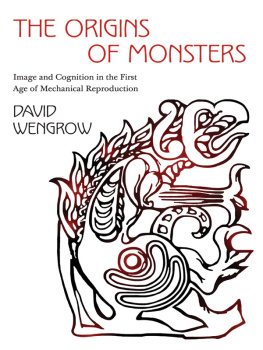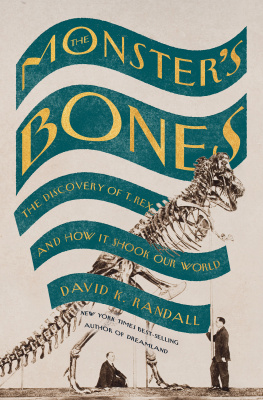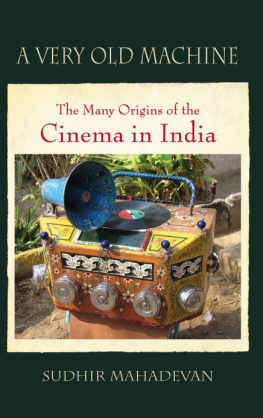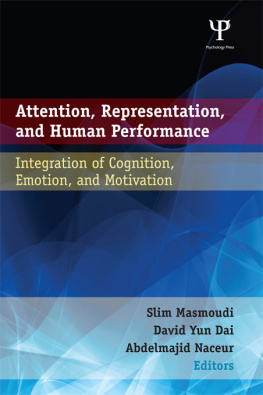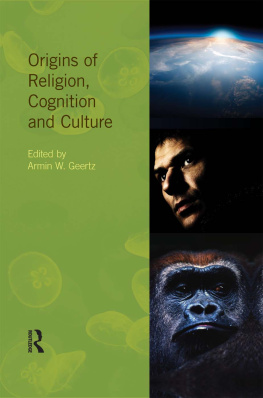
THE ORIGINS OF MONSTERS

THE ROSTOVTZEFF LECTURES
Institute for the Study of the Ancient World
New York University
The Rostovtzeff lectures are named for Michael I. Rostovzteff, a Russian ancient historian who came to the United States after the Russian Revolution and taught at the University of Wisconsin and then for many years at Yale University as Sterling Professor of Ancient History. Rostovtzeffs prodigious energies and expansive interests led him to write on an almost unimaginable range of subjects. The Institute for the Study of the Ancient World Rostovtzeff lecture series presents scholarship embodying its aspirations to foster work that crosses disciplinary, geographical, and chronological lines.
THE ORIGINS OF MONSTERS

Image and Cognition in the First Age of Mechanical Reproduction
DAVID WENGROW
THIS WORK IS PUBLISHED IN ASSOCIATION WITH THE INSTITUTE FOR THE STUDY OF THE ANCIENT WORLD AT NEW YORK UNIVERSITY.
PRINCETON UNIVERSITY PRESS
PRINCETON AND OXFORD
Copyright 2014 by Princeton University Press
Published by Princeton University Press, 41 William Street,
Princeton, New Jersey 08540
In the United Kingdom: Princeton University Press, 6 Oxford Street,
Woodstock, Oxfordshire OX20 1TW
press.princeton.edu
All Rights Reserved
Library of Congress Cataloging-in-Publication Data
Wengrow, D.
The origins of monsters : image and cognition in the first age of
mechanical reproduction / David Wengrow.
p. cm. (The Rostovtzeff lectures)
Summary: It has often been claimed that monsterssupernatural creatures with bodies composed from multiple speciesplay a significant part in the thought and imagery of all people from all times. The Origins of Monsters advances an alternative view. Composite figurations are intriguingly rare and isolated in the art of the prehistoric era. Instead it was with the rise of cities, elites, and cosmopolitan trade networks that monsters became widespread features of visual production in the ancient world. Showing how these fantastic images originated and how they were transmitted, David Wengrow identifies patterns in the records of human image-making and embarks on a search for connections between mind and culture. Wengrow asks: Can cognitive science explain the potency of such images? Does evolutionary psychology hold a key to understanding the transmission of symbols? How is our making and perception of images influenced by institutions and technologies? Wengrow considers the work of art in the first age of mechanical reproduction, which he locates in the Middle East, where urban life began. Comparing the development and spread of fantastic imagery across a range of prehistoric and ancient societies, including Mesopotamia, Egypt, Greece, and China, he explores how the visual imagination has been shaped by a complex mixture of historical and universal factors. Examining the reasons behind the dissemination of monstrous imagery in ancient states and empires, The Origins of Monsters sheds light on the relationship between culture and cognition Provided by publisher.
Includes bibliographical references and index.
ISBN 978-0-691-15904-1 (hardcover)
1. Art, Prehistoric. 2. Art, Ancient. 3. Archaeology and art. 4. Animals,
Mythical, in art. 5. Cognition and culture. 6. Rostovtzeff,
Michael Ivanovitch, 18701952. I. Title.
N5310.W46 2013 704.94709dc23
2013018192
British Library Cataloging-in-Publication Data is available
This book has been composed in Baskerville 10 Pro
Printed on acid-free paper.
Printed in the United States of America
1 3 5 7 9 10 8 6 4 2
FOR JACK, MASTER OF TRANSFORMATION,
AND FOR CATHY URWIN (19492012), IN MEMORY


I n the very first year there appeared from the Red Sea (the Persian Gulf) in an area bordering on Babylonia a frightening monster, named Oannes.... It had the whole body of a fish, but underneath and attached to the head of the fish there was another head, human, and joined to the tail of the fish, feet, like those of a man, and it had a human voice. Its form has been preserved in sculpture to this day. Berossos says that this monster spent its days with men, never eating anything, but teaching men the skills necessary for writing and for doing mathematics and for all sorts of knowledge: how to build cities, found temples, and make laws. It taught men how to determine borders and divide land, and also how to plant seeds and then to harvest their fruits and vegetables. In short, it taught men all those things conducive to a settled and civilized life. Since that time nothing further has been discovered.
Berossos, History of Babylonia, Book 1
(after Verbrugghe and Wickersham 2001: 44)
P aleolithic art offers very few examples of what might be construed as flights of the imagination. Its monsters can be counted on the fingers of one hand.
Andr Leroi-Gourhan, Gesture and Speech, 1993 [1964]: 393
ILLUSTRATIONS

Ambiguous forms in predynastic Egyptian art, early fourth millennium BC: (a) ivory pendant, (b) bone comb, and (c) clay figurine |
Cylinder seal impressions, showing composite figuration, from Mesopotamia and western Iran, late fourth millennium BC |
ACKNOWLEDGMENTS

T his book began life as the second series of M. I. Rostovtzeff Lectures, which I was honored to give at the Institute for the Study of the Ancient World, New York University, in the spring of 2011. My first thanks go to the faculty there, and in particular Roger Bagnall, for their confidence in my ability to address the academic mission of that institute, which pursues a connected vision of Old World cultures from prehistoric times to later antiquity. Both staff and students showed me enormous hospitality during my stay in New York, and responded with open minds to what were still, at that stage, a fairly raw set of ideas about the relationship between image, cognition, and institutional change. My second thanks go to the Institute of Archaeology at University College London, and especially Stephen Shennan, for granting me sabbatical leave to prepare those lectures and to develop them into the chapters that follow.
In doing so, I have been constantly reminded of the difficulties involved in approaching sources of evidence and bodies of theory outside my main areas of expertise, which lie in archaeology and anthropology (as opposed, for example, to cognitive science, ancient history, or art history, all of which play a role here). I hope that specialists working in other fields, especially those who gave so generously of their time and knowledge, will not find my treatment too cavalier, and that they will see this book primarily for what it is: an attempt to initiate dialogue between disciplinary approaches and area studies that are normally pursued in mutual isolation.
While none of the following can be held responsible for any of the arguments or evidence presented here, all will I hope accept my heartfelt thanks for their patience, interest, and much-needed advice: Bob Bagley, John Baines, Andy Bevan, Suzanne Blier, Maurice Bloch, Philippe Descola, Lothar von Falkenhausen, Stephan Feuchtwang, Wang Haicheng, Bruce Kapferer, Susanne Kchler, Joseph Maran, John Mitchell, David Napier, Lukas Nickel, Mara Nez, Asko Parpola, Dorit Peleg, Holly Pittman, Beate Pongratz-Leisten, Michael Puett, Stephen Quirke, Karen Radner, Jessica Rawson, Mike Rowlands, Erhard Schttpelz, Stephen Shennan, Karen Sonik, Jeremy Tanner, Judith Weingarten, Irene Winter, and Norman Yoffee.
Next page
